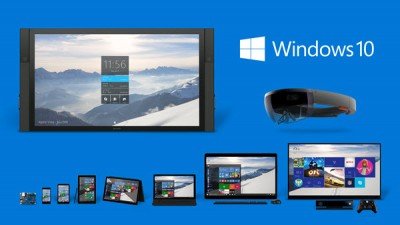Microsoft has, on its home based event at Redmond on Jan 21 2015, announced that people using Windows 8.1 and Windows 7 will be able to upgrade to Windows 10 without paying any extra charges.
Experts are saying Microsoft’s this move of offering free Windows upgrade is an apology for producing and trying to impose Windows 8 on to the users who were bewildered with the new interface. But Windows 10 promises a world of things and people since now are pretty used to touch (it has been two years since the touch based OS was released), the new operating system is said to be more welcome than any other edition.
The new operating system will also become a necessity for Windows users as Windows 10 is the one that will keep on continuing on devices as long as the devices work. Windows 10 will become the common base.
We wrote in a separate article that Windows 10 will automatically upgrade for rest of life of the device. In short, the offer of free upgrade to Windows 10 from Windows 8.1 and Windows 7 is welcome to the users of the latter machines and software developers, while is loss for hardware manufacturers and businesses still insisting on Windows 7.
There is a world of difference in 7 and Windows 10. But eventually everyone will have to upgrade to Windows 10, which is a pretty smart move by Microsoft. Businesses have to make arrangements to upgrade to Windows 10 within one year of its release so if they are running Windows 7, they are not going to be happy over the announcement. If they take longer to upgrade, it won’t be free. They have just trained their staff on using Windows 7 and a year later, they again incur costs of training on Windows 10. Not good for them and they might wait until support completely stops for Windows 7 before moving to Windows 10.
Another point to note here is that though Microsoft is offering a free upgrade, not all devices will be able to run Windows 10. There will hardware mismatches, especially with phones and tablets. Not good news for some Windows Phone users. They may have to go for a new Windows 8.1 phone or wait for Windows 10 phones to hit the markets. By then, the costs of smartphones may further go down, but until then, they keep running older versions of Windows phone on their phones.
The marketplace for Windows 10 for PC and Windows 10 for Phones will be merged, so developers are happy. They no longer will have to create two editions of each software or app. Same edition will run on both the mobile devices and the PCs so the work of developers will be reduced and they can focus on making their apps better.
Finally the hardware providers are in a fix as they do not know if the free upgrade to Windows 10 is beneficial for them or will backfire. In the long run, it would be beneficial, as everyone using Windows will have to get to Windows 10 sooner or later. So it will be sales of Windows 10 machines that will bring in profits. And those who cannot wait, might buy 8.1 based machines so that they can later upgrade to Windows 10.
The computers have to be built so that accommodate further changes to Windows 10. But future proofed hardware can be provided only after the hardware manufacturers test Windows 10 on their machines, assuming that people will not buy new hardware for at least four years after they buy an 8.1 or Windows 10 computer/tablet/phone. They have to come up with different attractive and luring hardware – which calls for research in the field. It may increase the tensions of the hardware makers as they are used to change operating system and sell the same machines (with little or no hardware changes) until now.
Thoughts?

When it still in preview version, why we must upgrade to 10 ?
What the date of final release ?
“not all devices will be able to run Windows 10. There will hardware mismatches”
How would Windows users know if their existing hardware (eg. laptop manufactured in 2010) is compatible with Win 10 ? Would Microsoft be rolling out a hardware compatibility check via Windows Update ? Would users of laptops (whose hardware is difficult to upgrade) be forced to buy new machines in order to use Win 10 ?
“Businesses have to make arrangements to upgrade to Windows 10 within one year of its release”
How about government organizations ? Some governments around the world are still using Win XP or Win Vista. Even at relatively advanced IT hubs like Singapore, the govt there finally upgraded to Win Vista only in 2011.
What I find funny is if its not Microsoft who try so hard to upgrade their users whether it be consumer or organisation people would still using Windows XP. Which in my opinion are not get benefited of evolved modern windows and its potential.